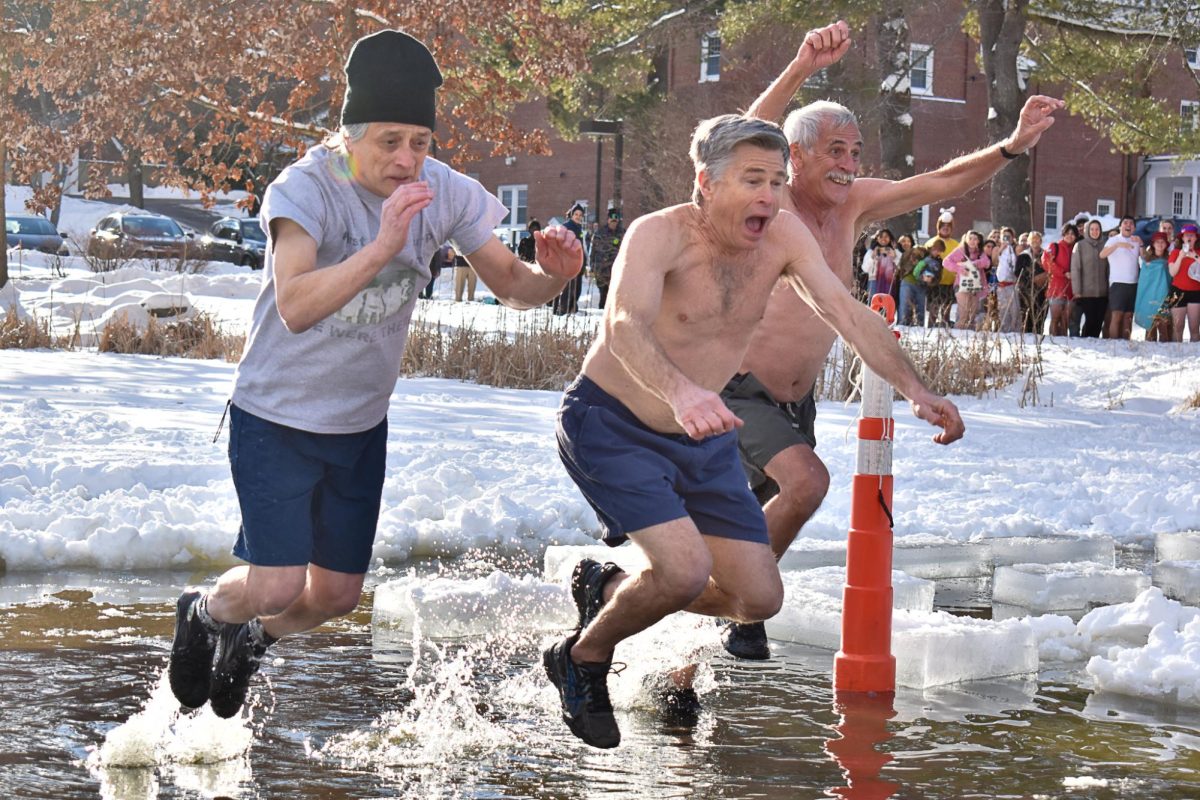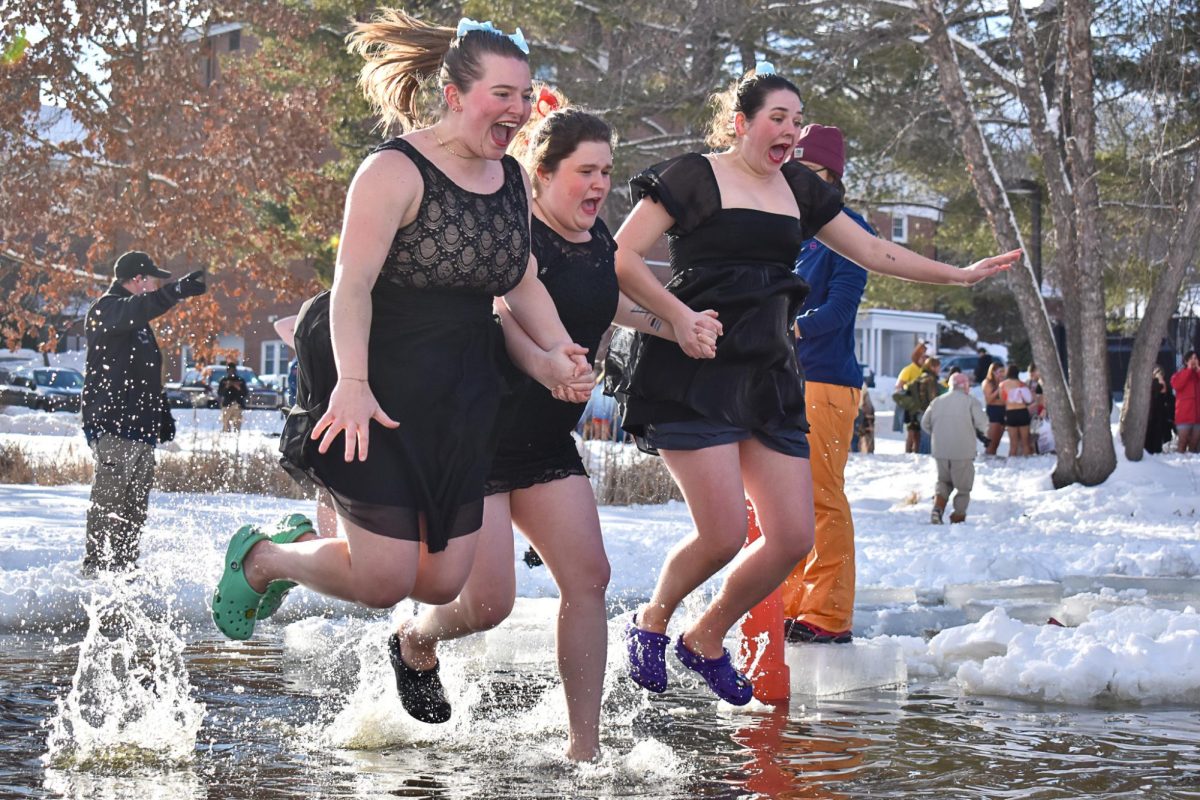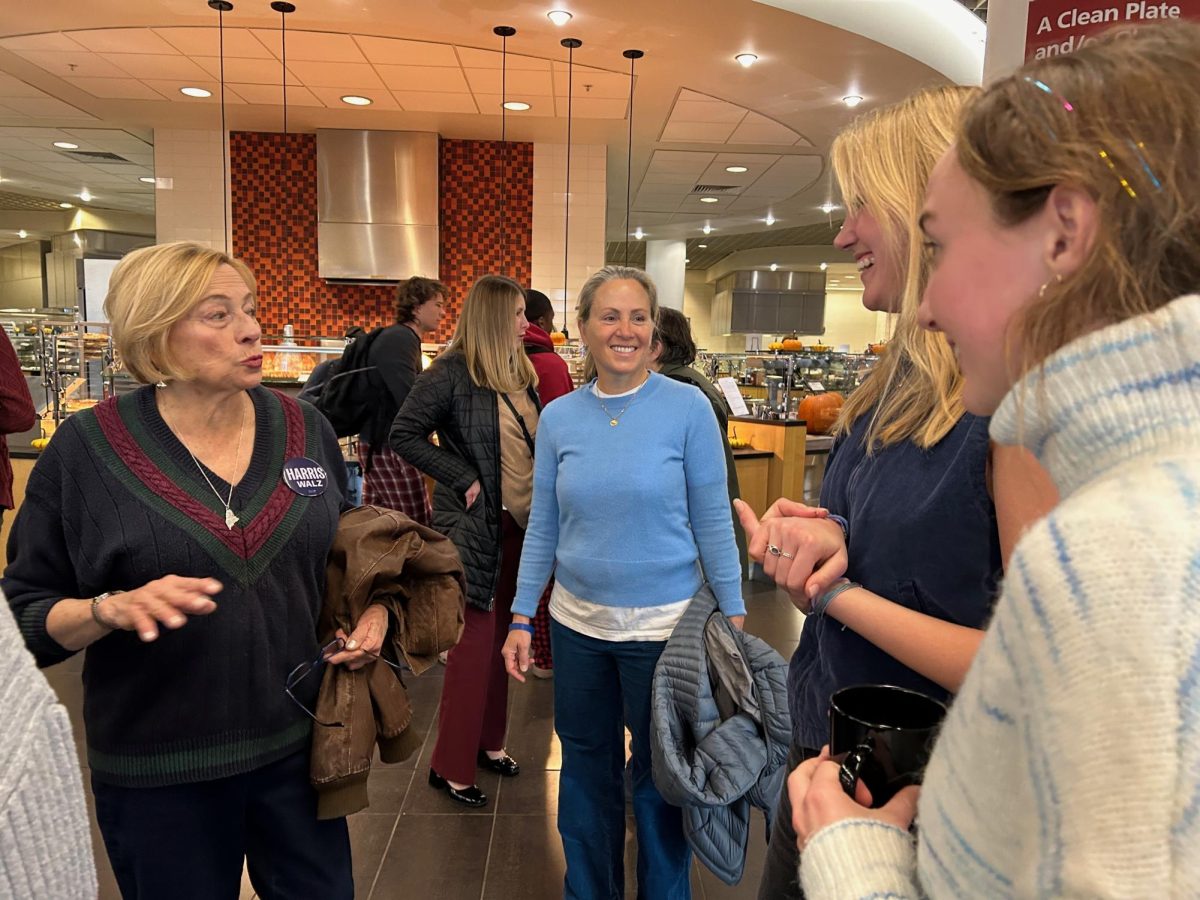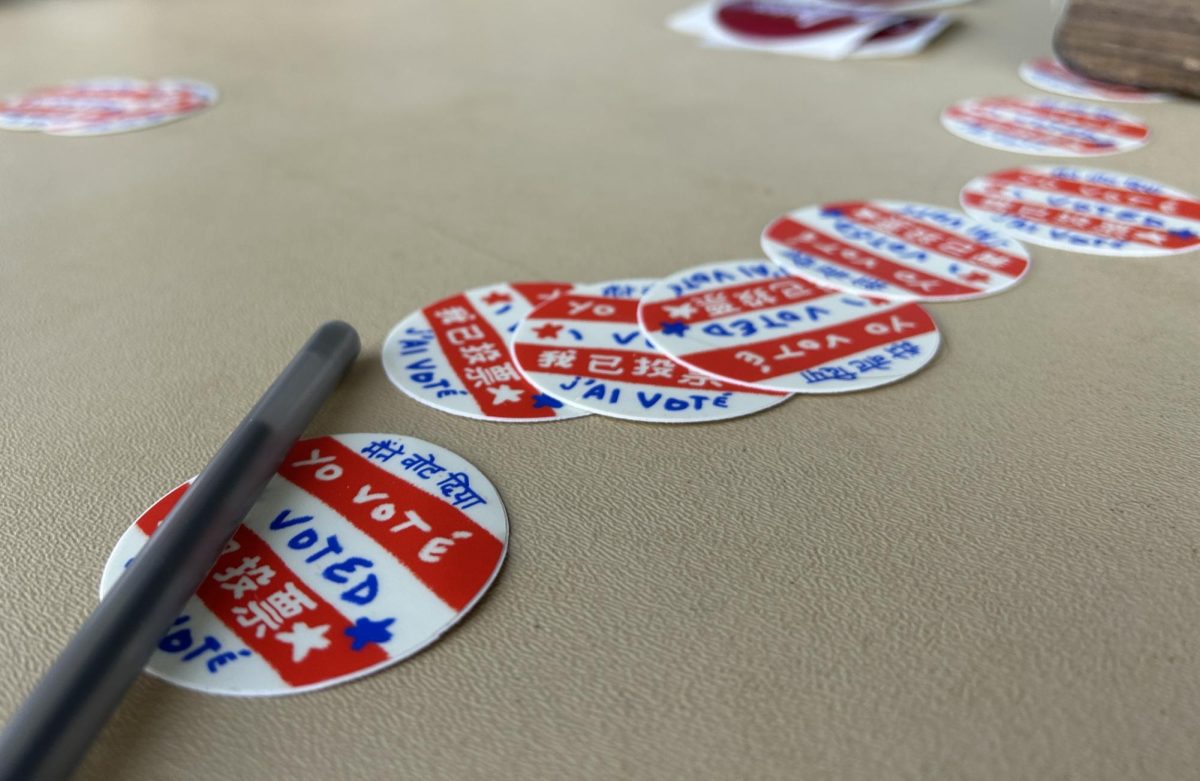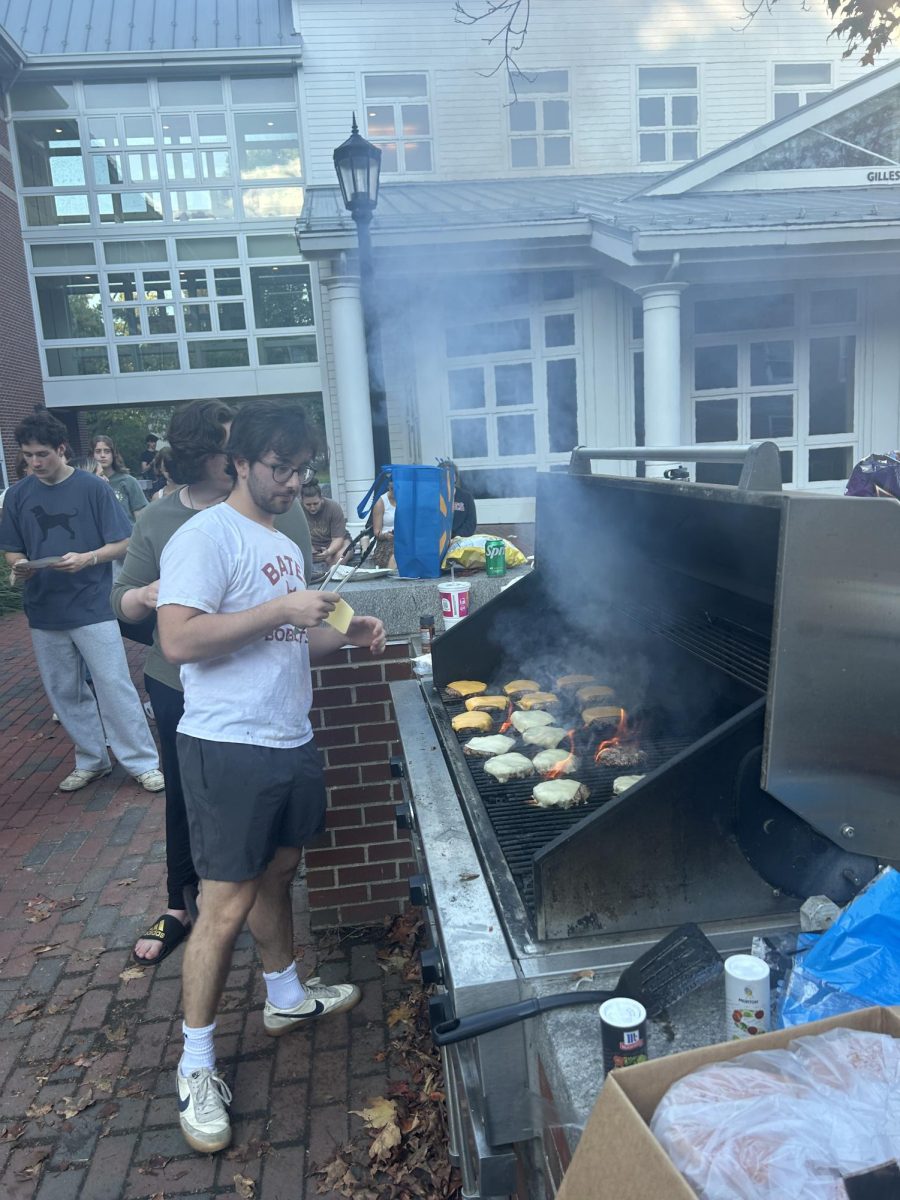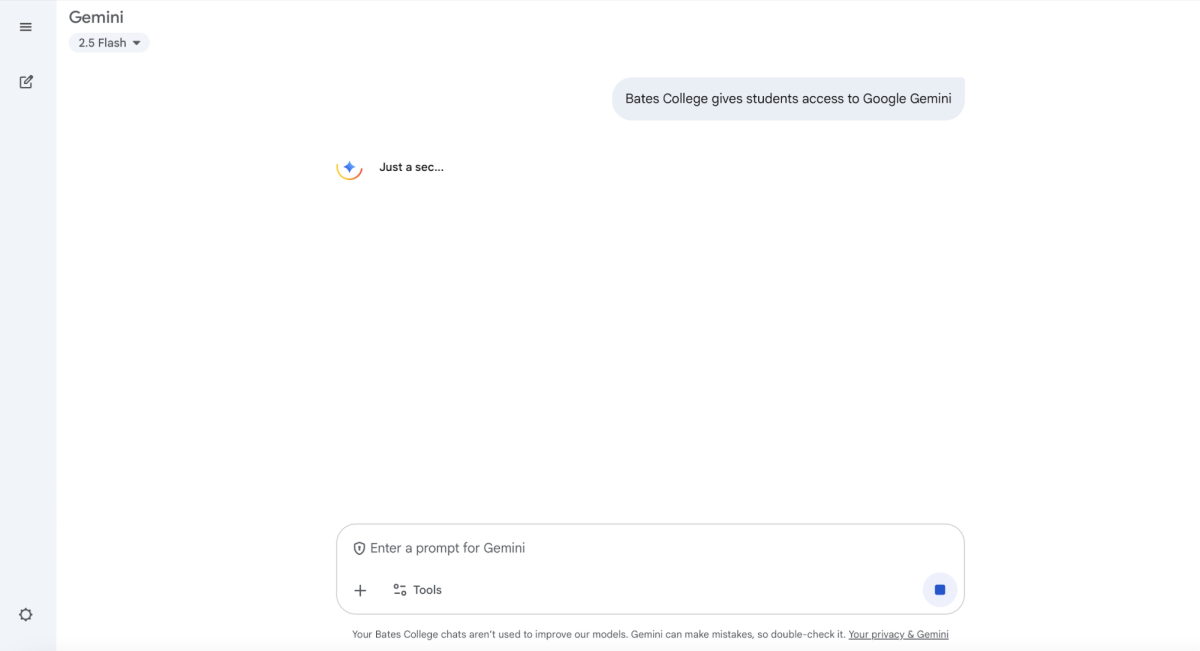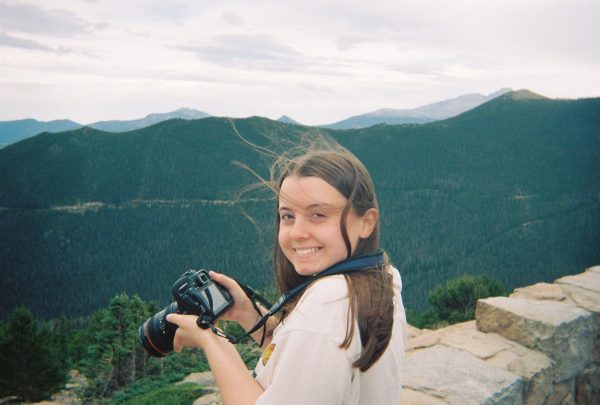It was March 17, 1975, and Chris Callahan ‘78 had an idea.
“I remember looking out the window. We were living in South Smith [Hall], facing the Puddle, and there was a lot of ice,” Callahan recalled. “And I just said, you know, this would be kind of fun to jump in there and celebrate spring.”
So he slid across ice with a screwdriver in hand, hoping to make a big enough hole to jump through.
“That was quickly designed to be useless,” he admitted.
But luckily, Scott Copeland ‘78 just happened to be walking by. Copeland and Callahan weren’t yet friends. But Callahan’s paltry attempt to get through the Puddle’s thick ice drew Copeland’s attention.
“I didn’t know Chris. I met him that day, and I was walking back to the dorm, and Chris was trying to dig a hole with a screwdriver,” Copeland described. “He told me that he was going to start a tradition.”
The two recruited Callahan’s buddy Lars Llorente ‘78 and Llorente’s roommate Mark Stevens, and with the help of Bates Outing Club equipment from the basement of Hathorn Hall, they got through the ice.
Then, the four of them jumped.
“We had a couple of the big football guys…ready to pull us out, because we had no idea how deep it was, and whether we would go into the ice and never come back,” Callahan said. But the water was only chest deep.
That St. Patrick’s Day Dip, as it was called originally, cemented a friendship between the four jumpers.
“We’ve been buddies ever since,” Callahan said. “We’ve been to everybody’s weddings.”
“And our kids’ weddings,” Copeland added.
But the 1975 Dip also kickstarted a permanent Bates tradition, now known as the Puddle Jump.
Only “a handful” of people jumped in 1975, following the lead of the first four. Fifty years later, in 2025, it was hundreds.
On Feb. 6, Bates students lined up for the customary Puddle Jump, shepherded by student volunteers and college-hired security. Today, the Puddle Jump is planned and conducted by Campus Life in conjunction with the Bates Outing Club.
“The day of, we get out there at 10 or 11 in the morning. We have a chainsaw that the Outing Club has, and we cut a huge hole in the ice,” Campus Life Associate Director of Outdoor Education & Programs Catie Luedee said. “You cut it out in little chunks. And then we have little ice grabbers, and you pull those up one at a time and line the walkway.”
Meanwhile, Facilities Services obtains the permit for the Puddle-side bonfire, and the Outing Club conducts the torch run to light it.
Safety is a big part of Luedee’s role. The ice must be thick, around four inches or more, and temperatures must be warm enough to not be dangerous for jumpers. The hole in the ice also has to be wide enough that no one will accidentally slip underneath, but small enough that it’s easy to grab jumpers when they’re stunned by the sudden cold – around eight by 12 feet.
Luckily, there’s a lot of precedent to go off of these days.
“We’re lucky that it’s been around for so long that it’s sort of a copy and paste every year,” Luedee said. “But students are only here for four years, so there’s always passing of knowledge…to a new class, and on and on and on.”
Originally, this legacy was passed along in a small composition notebook, originated by Callahan, Copeland, and the others.
“We wrote an introduction to say that this is something we’re going to start as a tradition,” Callahan said. Everyone who jumped that year, and the year after, and so on, signed the book.
On the tenth anniversary, when the four original jumpers returned, the book was still in use.
“We got down to Smith South, and to our delight, they were reading the book,” Copeland said. “And so there’s maybe 25 guys there getting ready to do it. And then [one] goes, ‘On this day, Chris Callahan…’ and Chris raised his hand and he goes, ‘I’m Chris Callahan.’ And it was like Jesus had just come back. They all turned around, they got on one knee and raised their hand, and it was hilarious.”
The book has since been lost, which Callahan calls a “sad subject.”
Besides the name, much has changed since the original Puddle Jump. For one thing, its placement on St. Patrick’s Day has shifted to the Friday of Winter Carnival. It’s also now school-sanctioned, though it’s still led by students of the Outing Club.
Callahan also mentioned that the first Puddle Jump “was not a drinking event.” Today, it coincides with Newman Day, an all-day drinking tradition where participants have a drink every hour for 24 hours.
The team behind the Puddle Jump does plan for potential student inebriation at the event.
“Our goal at Bates, which I hope is clear to students, is always safety,” Luedee said. “As long as I see that a student is able to walk by themselves and they’re safe, they’re allowed to jump.”
Luedee added that while hired security staff from local firm Taylor Made largely make the call as to who can jump, scarcely any students have been denied during Luedee’s three-Jump tenure.
This year marks the 50th anniversary of the Puddle Jump, and three of the original four jumpers – Callahan, Copeland, and Llorente – returned to Bates to once again make the plunge. It’s not the first anniversary they’ve attended, but 50 is big.
“On the first one, we said ‘let’s do this again if we’re here in 50 years,’” Callahan said.
For Copeland, it’s extra special – it’s his second time jumping with granddaughter Abbey Rowe ‘26.
“I actually did it two years ago when she was a freshman,” Copeland said. “It’s so cool.”
The founding jumpers shared that their Puddle Jump legacy has continued to be a big piece of their lives. Copeland mentioned seeing the Jump featured in a manual for students picking a college around the 20th anniversary.
“Chris sent me a copy of that, and he goes, ‘Some people cure cancer,’” Copeland said. “Meaning this was gonna be the most important thing we did in our life. It wasn’t gonna get any better than that.”
And returning for the 50th anniversary solidifies that legacy.
“It’s just tradition,” Copeland said. “It’s just history.”
Some clad in costumes, students Puddle Jumped on Feb. 9. See some jumpers here.



